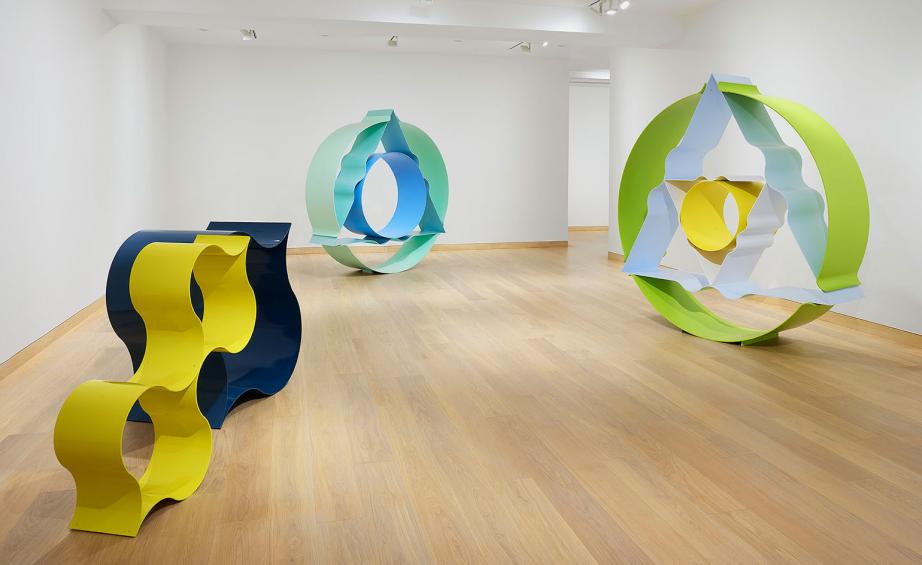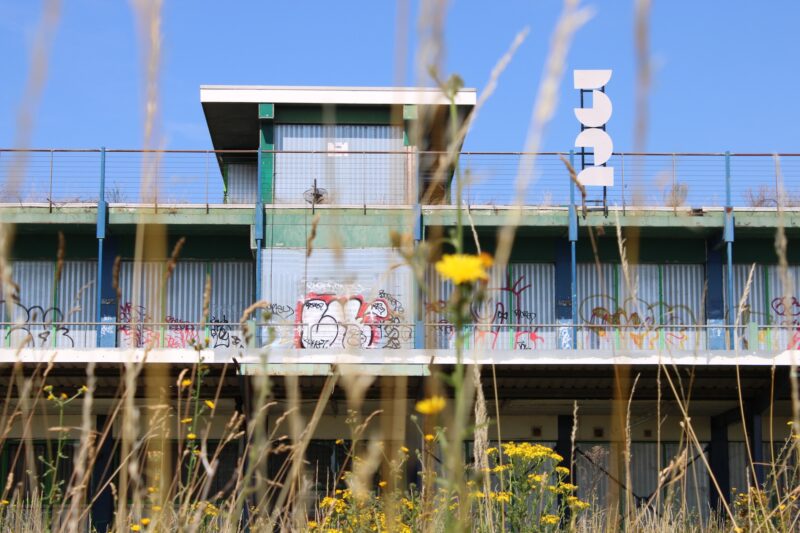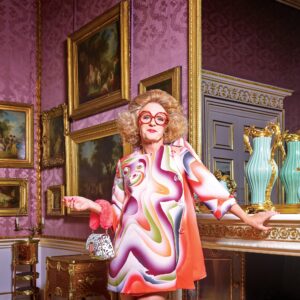We Love these large-scale, geometric colour sculptures of British sculptor David Annesley which are featured in a new exhibition at Waddington Custot.

Annesley’s 1960s welded steel and aluminium sculptures are imposing in presence but still retain a delicacy of structure. He used colour to suggest the idea of dynamism and weightlessness in his sculptures, believing that colour opened up ‘a whole new way of articulating and realising feeling in sculpture’. This is evident in ‘Untitled’ (1968-1969), a circle contained within a triangular shape set in a larger circle, where Annesley’s use of complementary light blue and green tones disguise the mass of the material and convey a sense of lightness.
The work from the sixties explores the relation of the body to the sculpture, examining the ratio of the parts to the whole. Many of the sculptures work in series, featuring the same motif, repeated or reduced in size.
Two sculptures, ‘Loquat’ (1965–2017) and ‘Godroon’ (1966–2017) relate to each other in this way. Both use
wave-like shapes, built up in varying sizes, forms and colour. The lack of a straight edge on which the
sculpture should sit gives the illusion of instability and movement.
These two sculptures, as well as ‘Untitled’ (1969-2017), have been remade this year under the supervision of the artist. All three sculptures were destroyed in the Momart fire of 2004, but following a lengthy process and using the original specifications, the sculptures have been reconstructed on the occasion of this exhibition as a chance to revisit the ideas that persistently arise in Annesley’s work. Annesley’s first-ever solo exhibition was at Waddington Galleries in 1966. This 2017 exhibition, looking back to Annesley’s works from the 1960s, brings these seminal sculptures to the fore and reassesses them from a contemporary viewpoint.
David Annesley Kurumidza at www.waddingtoncustot.com to 6th January 2018







